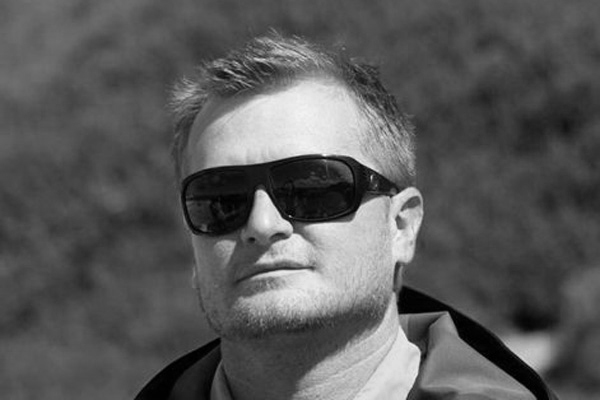
 Harry Wagner
Contributor
Harry Wagner
Contributor
If you own a Tacoma then we have good news and bad news. The bad news is that installing larger tires can prematurely wear out the rubber bushings on your steering rack. Worse still, these bushings are not available from the dealer; you have to purchase a whole new steering rack. The good news is that Energy Suspension offers replacement bushings made from polyurethane that are firmer than stock for crisper steering and less susceptibility to wear.
If you don’t have a new Tacoma, don’t feel left out. Energy Suspension also make similar bushings for earlier 4Runners and Tacomas, as well as Dodge Dakotas and Durangos.
We got our hands on one of the first sets of Energy Suspension bushings for ’05-plus Tacomas and headed to Relentless Fabrication in Sparks, Nevada, to perform the installation. As the name suggests, Relentless is more of a fabrication shop than a repair facility, having built a reputation for making innovative, lightweight armor for late-model Toyotas. Without a lift, the guys at Relentless performed the installation on the floor of the shop using jackstands and handtools. While the installation took a full day, it could easily be replicated in your driveway at home.
 1. The Energy Suspension steering rack bushings are a two-piece design for ease of installation, with a steel sleeve in the middle to add strength and resist deflection.
1. The Energy Suspension steering rack bushings are a two-piece design for ease of installation, with a steel sleeve in the middle to add strength and resist deflection.
 2. The bushings are constructed from polyurethane that is not only firmer than the stock rubber bushings for better steering response, but also more resistant to chemicals and road grime for long-lasting performance.
2. The bushings are constructed from polyurethane that is not only firmer than the stock rubber bushings for better steering response, but also more resistant to chemicals and road grime for long-lasting performance.
 3. While earlier Toyotas used bushings that ran parallel to the framerails, the ’05 and later Tacomas use bushings located straight up and down. Accessing these bushings requires more work, complicating the installation.
3. While earlier Toyotas used bushings that ran parallel to the framerails, the ’05 and later Tacomas use bushings located straight up and down. Accessing these bushings requires more work, complicating the installation.
 4. Relentless Fabrication took time out of building aluminum winch bumpers to perform the installation on the shop floor. Not the easiest way to perform this install, but it worked.
4. Relentless Fabrication took time out of building aluminum winch bumpers to perform the installation on the shop floor. Not the easiest way to perform this install, but it worked.
 5. The first issue we encountered was when the bolt on the driver side, during removal, hit the A/C compressor. Energy Suspension recommends lifting the engine to get the bolt out, but if you grind the bottom thread to shorten the bolt flush with the nut, it can be removed. Alternately you could cut the bolt and reinstall it upside-down, but then you risk the bolt’s falling out should it ever come loose.
5. The first issue we encountered was when the bolt on the driver side, during removal, hit the A/C compressor. Energy Suspension recommends lifting the engine to get the bolt out, but if you grind the bottom thread to shorten the bolt flush with the nut, it can be removed. Alternately you could cut the bolt and reinstall it upside-down, but then you risk the bolt’s falling out should it ever come loose.
 6. The lines to the rack have to be disconnected to remove the bushings, which mean that the system will need to be bled once the rack is reinstalled. The rack also has to be separated from the steering shaft. Before doing this, secure the steering wheel so that it will not rotate once it is free from the rack.
6. The lines to the rack have to be disconnected to remove the bushings, which mean that the system will need to be bled once the rack is reinstalled. The rack also has to be separated from the steering shaft. Before doing this, secure the steering wheel so that it will not rotate once it is free from the rack.
 7. A pickle fork was used to remove the factory bushings. The rack had to be moved and rotated in order to make room for the pickle fork in the tight confines of the undercarriage.
7. A pickle fork was used to remove the factory bushings. The rack had to be moved and rotated in order to make room for the pickle fork in the tight confines of the undercarriage.
 8. The factory rubber bushings were destroyed during removal. The remains are on the right, with the new bushing on the left.
8. The factory rubber bushings were destroyed during removal. The remains are on the right, with the new bushing on the left.
 9. We greased the new bushings before pressing them into place. Afterward the rack was reinstalled and the steering system bled before the wheels touched the ground.
9. We greased the new bushings before pressing them into place. Afterward the rack was reinstalled and the steering system bled before the wheels touched the ground.
 10. Once the installation was completed we headed to the alignment shop and then hit the dirt. Although the truck looks the same, the increase in steering response was noticeable on the street and the trail.
10. Once the installation was completed we headed to the alignment shop and then hit the dirt. Although the truck looks the same, the increase in steering response was noticeable on the street and the trail.